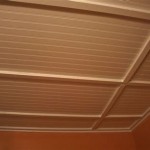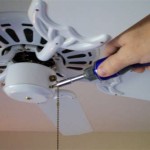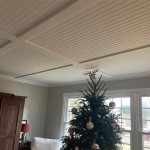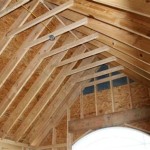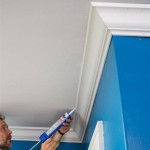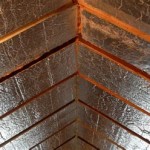How To Install Ceiling AC Vents: A Comprehensive Guide
Installing ceiling AC vents is a home improvement project that can be undertaken by individuals with basic DIY skills. Proper installation is crucial for efficient cooling and heating, even distribution of airflow, and maintaining indoor air quality. This guide provides detailed, step-by-step instructions for installing ceiling AC vents, covering the necessary tools, materials, safety precautions, and installation procedures.
Before commencing the installation process, a thorough assessment of the existing HVAC system and the intended location of the new vents is necessary. This includes verifying compatibility with the existing ductwork, ensuring adequate structural support for the vent, and understanding local building codes and regulations. Skipping this preliminary step can lead to costly errors and potential safety hazards.
Key Point 1: Preparation and Planning
Effective preparation is paramount before beginning any physical work. This stage involves gathering the necessary tools and materials, identifying the optimal vent locations, and taking accurate measurements. Precise planning at this stage will contribute significantly to a smooth and successful installation.
The first step is to gather the required tools. These typically include: a drill with various drill bits (including a hole saw of the appropriate size), a drywall knife or utility knife, a measuring tape, a pencil, safety glasses, gloves, a ladder, a stud finder, and a level. Depending on the complexity of the project, additional tools such as a reciprocating saw or a specialized duct cutter might be necessary.
Next, assemble the necessary materials. The primary material is the ceiling AC vent itself. It is crucial to select a vent that is the correct size and type for the existing ductwork. Other materials include: duct tape (specifically designed for HVAC applications), screws or nails (appropriate for securing the vent to the ceiling framing), insulation (to seal any gaps around the vent and prevent air leakage), and potentially drywall patch material (if any existing holes need to be repaired).
Identifying the correct location for the new vent is critical for optimal air distribution. Consider the existing layout of the room and the location of other vents. The goal is to create a balanced airflow throughout the space, avoiding hot or cold spots. Use the stud finder to identify the locations of ceiling joists or rafters. Avoid cutting into these structural members, as this can compromise the integrity of the ceiling. Mark the intended location of the vent with a pencil, ensuring it is centered between the joists and away from any obstructions like wiring or plumbing.
Accurate measurements are vital for a professional-looking installation. Measure the diameter of the ductwork to ensure the vent will fit properly. Also, measure the distance between the joists to confirm that the vent will fit within the available space. Double-check all measurements before making any cuts to the ceiling.
Safety is always the top priority. Before starting any work, turn off the power to any electrical circuits in the vicinity of the work area. Wear safety glasses to protect your eyes from debris and gloves to protect your hands. Use a sturdy ladder that is properly positioned and secured.
Key Point 2: Cutting the Ceiling and Installing the Vent
This phase involves the physical cutting of the ceiling and the subsequent installation of the AC vent. Careful execution is essential to avoid damage to the ceiling or the underlying structure.
Using the pencil markings as a guide, carefully cut a hole in the ceiling. If the ceiling is made of drywall, use a drywall knife or utility knife. Score the drywall along the marked lines, then gradually deepen the cut until you have completely penetrated the drywall. If the ceiling is made of plaster, a reciprocating saw with a plaster-cutting blade might be necessary. Cut slowly and carefully to avoid cracking or chipping the plaster.
After cutting the hole, inspect the area inside the ceiling cavity. Look for any obstructions, such as wiring, plumbing, or insulation. If any obstructions are present, carefully move them out of the way or relocate the vent if necessary. Clear any debris from the hole to ensure a clean and smooth surface for the vent.
Next, connect the ductwork to the vent. Carefully slide the vent into the hole in the ceiling. Ensure that the vent is properly aligned with the ductwork. Use duct tape (specifically designed for HVAC applications) to seal the connection between the vent and the ductwork. Apply the tape tightly and smoothly to prevent air leaks. Ensure that all seams and edges are completely sealed.
Secure the vent to the ceiling. Most ceiling AC vents have flanges or mounting brackets that allow them to be attached to the ceiling framing. Use screws or nails to attach the vent to the joists or rafters. Ensure that the vent is securely attached to the ceiling and that it does not wobble or move. Use a level to ensure that the vent is installed straight and level.
To prevent air leaks and improve energy efficiency, insulate around the vent. Use insulation to fill any gaps between the vent and the ceiling. This will help to prevent conditioned air from escaping into the ceiling cavity. Ensure that the insulation does not block the airflow through the vent.
If any damage was done to the ceiling during the installation process, repair it using drywall patch material. Apply the patch material to any holes or cracks in the ceiling. Allow the patch material to dry completely, then sand it smooth. Paint the repaired area to match the existing ceiling.
Key Point 3: Testing and Fine-Tuning
This final stage verifies the functionality of the installed vent and ensures optimal airflow. It involves a series of tests and adjustments to achieve the desired performance.
After the vent is installed, turn the power back on to the HVAC system. Turn on the air conditioning or heating and check the airflow through the vent. Ensure that air is flowing freely and evenly through the vent. If the airflow is weak or uneven, check for obstructions in the ductwork or the vent itself. Make sure the damper, if present, is properly adjusted.
Adjust the vent dampers to control the airflow. Most ceiling AC vents have adjustable dampers that allow you to control the direction and volume of airflow. Experiment with different damper settings to find the optimal airflow for your room. Direct the airflow away from occupants to prevent drafts and ensure even cooling or heating.
Inspect the installation for air leaks. Carefully inspect the area around the vent for any air leaks. If you detect any leaks, seal them with duct tape or insulation. Air leaks can reduce the efficiency of your HVAC system and increase your energy bills.
Monitor the temperature and airflow in the room over several days. Pay attention to any hot or cold spots. Adjust the vent dampers as needed to maintain a comfortable temperature throughout the room. Consider using a thermometer or temperature sensor to monitor the temperature in different areas of the room.
If the airflow is still not optimal, consider consulting with a professional HVAC technician. A technician can diagnose any underlying problems with your HVAC system and recommend solutions to improve airflow and energy efficiency. They may identify issues such as undersized ductwork, leaks that are difficult to access, or problems with the central HVAC unit.
Regular maintenance of the ceiling AC vent is crucial for longevity and performance. Periodically inspect the vent for dust and debris. Clean the vent with a vacuum cleaner or damp cloth as needed. This will help to maintain optimal airflow and prevent the buildup of allergens.
Proper installation and maintenance of ceiling AC vents are essential for maintaining a comfortable and healthy indoor environment. By following these steps and taking the necessary precautions, individuals can successfully install ceiling AC vents and improve the efficiency of their HVAC systems.

How To Replace Your Ac Vent Covers Clf Services

Replacing A Heat Vent Register

Quick Ceiling Vent Fix

A Step By Guide To Replacing Your Ceiling Vent Air Filter

Easy Way To Upgrade Your Vents Fittes Aria Vent Lite Frame

How Do I Extend A Register From Overhead Duct To Drop Ceiling Doityourself Com Community Forums

How To Open And Close Ceiling Air Vents

How To Redirect Airflow From Ceiling Vent

Ceiling Vent Replacement For Air Conditioning Hq Joondalup Perth Wa
The Drywall Around My Ceiling Air Vent Is All Broken Up What Can I Fill Space With So A New Cover Be Ed In Quora
Related Posts

